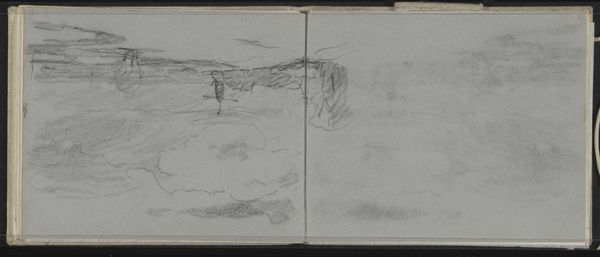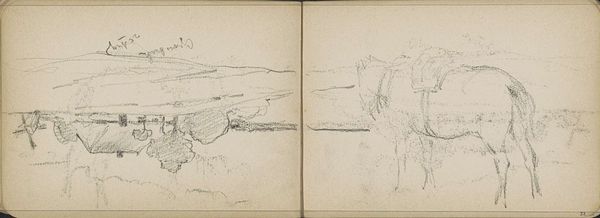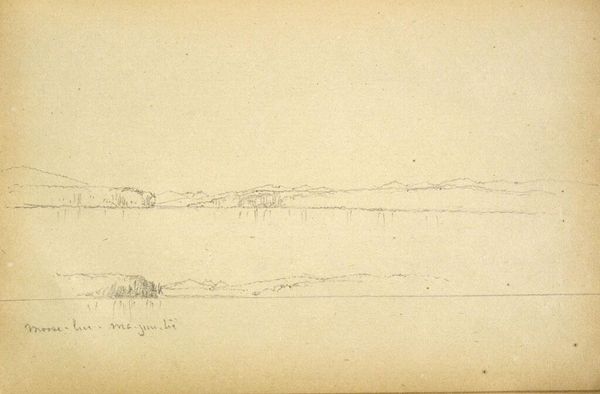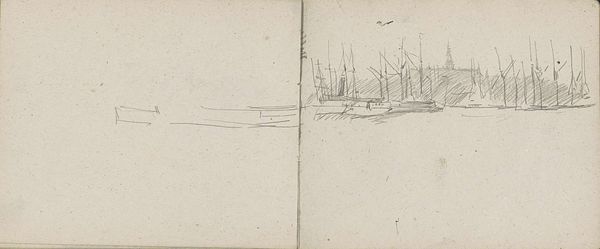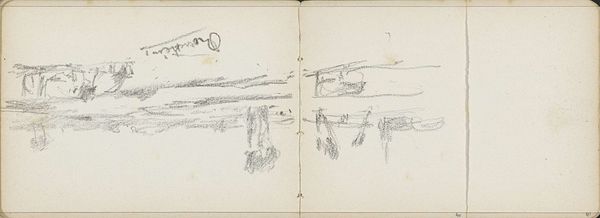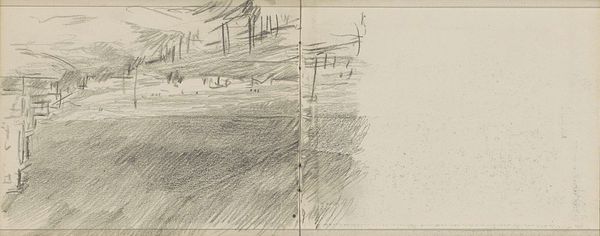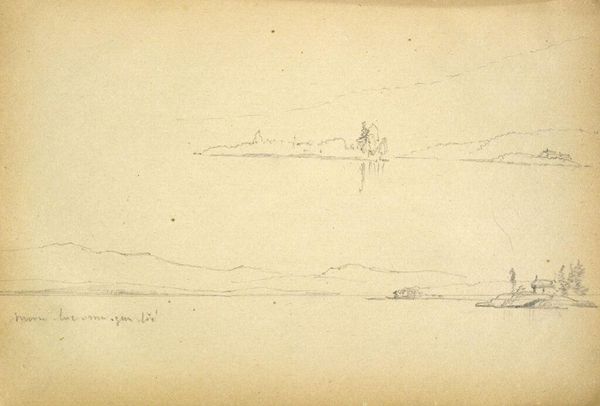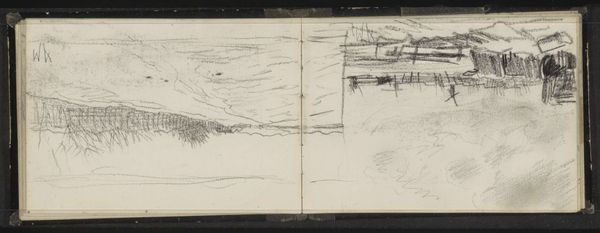
drawing, pencil
#
drawing
#
pen sketch
#
landscape
#
pencil
#
realism
Copyright: Rijks Museum: Open Domain
Curator: Here at the Rijksmuseum, we have a delicate drawing entitled "Landschap met bomen en struiken" – Landscape with trees and bushes. It was created by Anton Mauve sometime between 1848 and 1888, using pencil and pen. Editor: Immediately, the sketchiness appeals. There's a simplicity and starkness in the representation, a kind of desolate quietude that speaks to me. What was Mauve looking at, or thinking, while making it? Curator: Mauve belonged to the Hague School, a movement that advocated for realism and capturing the mood of the Dutch landscape, so it is possible he wanted to focus on land exploitation happening in his time and social realism. The starkness could represent the plight and dispossession of farmers, so he chose these medium. Editor: Absolutely. The social and economic conditions shaped artistic output, no doubt. It feels less like a celebration of nature and more like an elegy, you know? It reminds us that romanticising pastoral scenes often obscures realities like the exploitation of the working class and unsustainable practices of landscape modification. Curator: The political implications are all here in Mauve's technique. Using the stark lines, with such minimal detail, it is likely to enhance this sentiment of land weariness as a mirror of his audience’s political weariness with those practices and injustice, reflecting his community views. This invites his contemporaries into these political questions. Editor: Do you think the location influences the reception of the image, being here in Amsterdam versus elsewhere? Are viewers in Amsterdam closer to Mauve’s political audience due to their context of shared exploitation? Curator: That’s an excellent question. Amsterdam's vibrant atmosphere brings with it layered colonial, social, and capitalist narratives that contextualize not just Mauve, but other landscape art and images created here as commentary about what art can bring into a nation’s perspective and conversation. Editor: Exactly, understanding that conversation is crucial. This piece, it's more than just trees and bushes; it's about power, dispossession, and responsibility, for our role in the world. Curator: A fitting thought with which to leave our visitors. I believe reflecting on such social and environmental considerations ensures that art continues to serve as a potent tool for awareness, contemplation and eventually a drive for change.
Comments
No comments
Be the first to comment and join the conversation on the ultimate creative platform.





